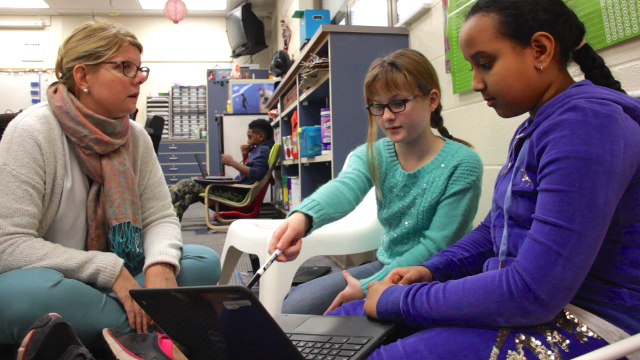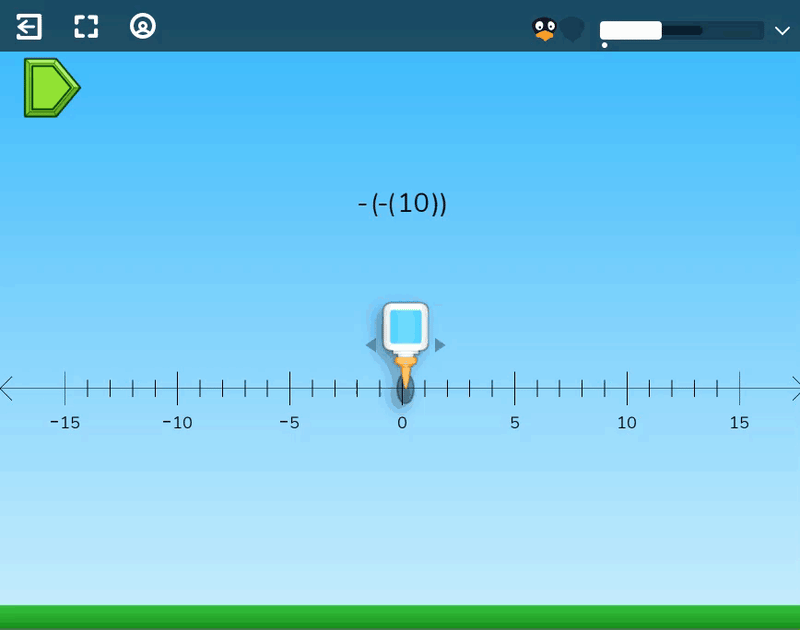
The newest version of ST Math is out and I am beyond excited! I came to MIND Research Institute after eighteen years working in a school district. I have been a teacher at the elementary and middle level, a district math coordinator and coach, and a district math and science curriculum director.
Throughout my career, I have sought to provide experiences and opportunities for students and teachers to not only succeed at math but understand math as something that can solve even the most challenging problems. I have always wanted to find ways to help students and teachers approach math with joy, confidence, curiosity, and wonder—especially those who have always felt like math was for some, but not for them.

As a former math teacher, I have seen firsthand the invisible barriers that keep students from realizing their mathematics potential. It starts with their ability to believe that they can do it. Some students have experienced anxiety and trauma around math. They feel like they just don’t get it, and since they often can’t explain why, they think it has to do with not having “math smarts.” For so many students, math becomes a measuring stick dividing those who are “smart at math” to those who are not.
In the six years I've been at MIND, I’ve found an organization full of people who believe every student has the potential to deeply understand and truly love math. MIND is an edtech non-profit research organization that focuses on mathematics and neuroscience. We use what we know about how students learn to help them become critical and creative thinkers who are equipped to solve the world’s most challenging problems.
We understand that being “smart at math” is not what divides students who are successful from those who struggle. The division is caused by experience, opportunity, self-confidence, and perseverance.
Students must be given the opportunity to experience rich, relevant, and rigorous math tasks. They must be given the opportunity to think critically and develop problem-solving skills. They must be given the opportunity to learn from their mistakes and to apply, observe, and analyze their strategies.
By opportunity, I mean the accountability for thinking, reasoning, evaluating, forming, and revising conjectures must be owned by the student. Their work cannot be based on the thoughts of others. That is why a pillar of our ST Math program is “learn by doing.” In ST Math, students learn when they are right, and they learn when they are wrong. They learn to play and play to learn.

I started this blog stating that I was beyond excited about the new ST Math. It has been designed to enable more learning. Some of my new favorite features are our facilitation tools. These tools create more opportunities for students to apply and evaluate the hard thinking that leads to deep learning.
One of the key components of ST Math has always been the immediate informative feedback students receive when they apply their strategies. This feedback provides visual proof of what happened when a strategy was applied. Being able to see the math allows students to analyze their strategy and make the needed adjustments.
The new ST Math has taken that feedback and added a power boost; bringing the playback bar from behind teacher control and placing it in the hands of the student. Students can use the playback feature to pause, rewind, and stop the animation—helping them think through their actions and the resulting feedback.
In addition to the playback features, the new ST Math also provides students with an annotation tool. This tool allows students to draw on the screen. With the current need for so many children to learn remotely, these tools support students that may not have a teacher physically present with them.
As students play ST Math puzzles, the tools allow them to work out their thinking, make connections from the visual to the symbolic, explore and unpack their mistakes, evaluate the effectiveness of their strategies, and work out other strategies they may want to apply. These facilitation tools—whether they are used in school or as part of at-home learning—provide powerful learning potential in the hands of students.

In addition to the facilitation tools, the new ST Math supports teachers in making data-informed personalization decisions with the curriculum. Visualize a grade-level team meeting either virtual or in-person, where teachers are discussing their data from their latest assessment. From the data, Mrs. Smith identifies concepts for which her students need additional learning opportunities and uses that information to personalize the ST Math experience.
Using the assignments feature, teachers like Mrs. Smith are able to assign any Objective from any grade level to any student. This allows teachers to use their data to determine if students need to build foundational skills, need additional practice on grade-level content, or need to have their thinking stretched by more advanced content. With a click, teachers can assign Objectives to a single student, a small group of students, or the entire class.
For each ST Math Objective, teachers can preview the content, read the description, see the puzzle count, and test drive the games to better understand the learning provided to students.

The reason I love these new features is that they allow teachers to increase the impact on learning during small group instruction. This impact occurs when teachers are meeting face-to-face in schools with students, or working virtually with students one-on-one or in small groups.
Using the assignments feature, teachers can assign Objectives to a small group of students. When meeting for small group instruction, teachers can have students play the assigned Objective and engage in rich discussions about the content.
Using the playback features and the annotation tools to explain their thinking, student conversations around strategies and math concepts will become more powerfully visual, creating opportunities for deepening math understanding. This strategy helps bridge the 1:1 and small group experience into an opportunity for students to critique the reasoning of others, extend math understanding, and stretch student thinking.
The new ST Math is more engaging, interactive, and puts more of the learning and opportunities to deepen math understanding right in the hands of students. The added features have resulted in a program that is not only pretty cool but is also a powerful instructional tool for both in-person and virtual use.

Twana is Vice President of Curriculum and Instruction at MIND Research Institute. Follow her on Twitter @TwanaYoung.
Comment